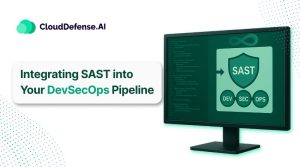DevOps Defined
DevOps is a set of practices, tools, and cultural philosophies that integrates software development and IT operations into a common role, to improve a company’s ability to deliver software at a high velocity. With DevOps best practices in place, a company can produce software more efficiently, securely, and swiftly.
How Does DevOps Work?
DevOps changes the way software development and IT operations teams work by promoting collaboration throughout the entire product lifecycle. It breaks down the traditional divide between development and operations, often merging them into one team. This unified team, consisting of engineers with diverse skills, handles everything from creating and testing the software to deploying and managing it.
At the heart of DevOps is the use of tools to automate and speed up processes, making everything more reliable and efficient. A DevOps toolchain bundles key DevOps principles like continuous integration, continuous delivery, and automation. This toolchain helps teams simplify their workflows, ensuring smooth transitions between different development stages.
Core DevOps Principles
DevOps thrives on several core principles that enable teams to deliver software faster and more efficiently. These principles form the backbone of successful DevOps implementations.
1. Simplifying Processes Through Automation
Automation is fundamental to DevOps. By automating tasks such as code testing, builds, releases, and environment provisioning, organizations eliminate manual errors and accelerate development. Automation ensures that repetitive tasks no longer slow down the workflow, allowing teams to focus on more complex, value-driven work. This results in faster releases and more reliable software delivery.
2. Promoting Cross-Functional Collaboration
True DevOps success hinges on smooth collaboration between development and operations teams. The breakdown of silos encourages shared responsibility, enabling teams to work together cohesively. Improved communication reduces friction in handoffs, speeds up issue resolution, and ensures that all team members are on the same page, enhancing overall project execution.
3. Pursuing Continuous Optimization
DevOps teams are always looking for opportunities to improve efficiency. This culture of continuous optimization involves automating redundant tasks and scrutinizing metrics for performance improvements. Teams focus on reducing cycle times, speeding up mean-time-to-recovery, and identifying inefficiencies, ensuring that the software delivery process is constantly evolving and improving.
4. Centering on User Needs with Rapid Feedback Cycles
DevOps places a strong emphasis on the end user by incorporating short, frequent feedback loops. Through automation and improved team dynamics, feedback from users can be quickly integrated into the development process. This iterative approach ensures that products evolve according to real user demands, resulting in faster releases that are aligned with market needs.
Why DevOps Matters?
Software is integral to every aspect of business today. It revolutionizes how companies build and deliver software. Like industrial automation transformed manufacturing in the 20th century, DevOps transforms the software development lifecycle.
It ensures businesses can interact with customers smoothly through online services and applications, enhancing operational efficiencies across the value chain. DevOps isn’t just a methodology; it’s a necessity for companies aiming to stay competitive.
We all know that software plays a central role in industry transformation, from logistics and communications to overall operations. This is where DevOps plays a major role in creating a collaborative approach towards company operations.
Benefits of DevOps
There are no explicitly defined models and universally agreed-upon goals that can help define DevOps. However, we can still focus on what you can get in return by implementing DevOps in your organization. These are the range of goals and objectives that help define DevOps.
1. Improved Collaboration
A key advantage of DevOps is fostering a culture of collaboration between development and operations teams. By sharing responsibilities and combining workflows, both teams work more efficiently, reducing handovers and misunderstandings. This culture of ownership and accountability leads to smoother, faster workflows, which ultimately benefits the entire software lifecycle.
2. Rapid Delivery
In DevOps, the pace of product releases is significantly accelerated. With practices like continuous integration and continuous delivery (CI/CD), teams can release new features and fixes more frequently. This means businesses can respond to customer needs faster and stay competitive by continuously improving their products.
3. Security
DevOps allows businesses to move quickly without compromising on security. Automated compliance policies, fine-grained access controls, and infrastructure as code (IaC) ensure that teams can maintain control while scaling. Security becomes an integral part of the workflow, ensuring compliance and risk management are maintained across all environments.
4. Reliability
Ensuring consistent performance is another significant benefit of DevOps. By integrating practices like automated testing and monitoring, DevOps ensures that application updates and infrastructure changes are reliable and safe. This enables businesses to deliver at a faster pace without sacrificing user experience.
5. Scale
DevOps supports the ability to manage infrastructure and development processes at scale. Automation and consistency are key enablers, allowing teams to manage complex systems with reduced risk. Tools like infrastructure as code help replicate environments efficiently, making it easier to scale and manage resources dynamically.
6. Speed
In a fast-paced market, speed is everything. DevOps allows organizations to innovate more quickly by automating processes and enabling continuous delivery. Microservices architecture allows teams to own their services and release updates faster, making it easier to adapt to market changes and accelerate business results.
8 Phases of the DevOps Lifecycle
The DevOps lifecycle encompasses a series of phases that integrate development and operations practices to ensure efficient software delivery. These phases facilitate continuous improvement, automation, and collaboration, enabling organizations to innovate rapidly while maintaining quality and security standards. Here are the key phases of the DevOps lifecycle:
1. Planning
The lifecycle begins with planning, where teams define project goals, determine the scope, and set timelines. During this phase, developers and operations teams collaborate to create a roadmap for new features, bug fixes, or infrastructure changes. The use of agile methodologies and collaborative tools ensures that planning is flexible, adaptable, and aligned with business objectives.
2. Coding
In this phase, developers write and review the code based on the plan. Collaboration between teams ensures code is developed efficiently and follows best practices. Source code management tools (e.g., Git) play a vital role here, allowing teams to track changes, manage versions, and collaborate on code updates. This phase also lays the groundwork for automating other stages of the lifecycle.
3. Building
The building phase involves compiling code and preparing it for testing and deployment. Automated build tools create executable files from the source code and identify any errors or issues. Continuous integration (CI) practices are vital in this phase, as they allow for frequent integration of new code into a shared repository. Automated testing is often introduced here to catch issues early in the build process.
4. Testing
Automated testing plays a critical role in the DevOps lifecycle, ensuring that new code doesn’t break existing functionality and meets quality standards. The testing phase includes various tests like unit, integration, security, and performance tests. Continuous testing helps identify bugs early and ensures that only stable code progresses to the next stage. This reduces time-to-market and minimizes the risk of issues in production.
5. Releasing
Once the code has passed testing, it moves into the release phase. This stage focuses on packaging the software and preparing it for deployment. In DevOps, continuous delivery (CD) automates the release process, ensuring that the software can be delivered to production quickly and reliably. With proper release management practices, teams can deploy code with minimal downtime and risk, ensuring smooth operations.
6. Deploying
The deployment phase involves moving the software to the production environment. In DevOps, continuous deployment ensures that changes are automatically pushed to production after passing the necessary tests. Automation plays a key role in this phase, reducing human intervention and potential errors during deployment. DevOps tools for Infrastructure as Code (IaC) help automate the provisioning of infrastructure, ensuring consistency and efficiency.
7. Operating
Once deployed, the software is actively used in a live environment. During this phase, monitoring tools are used to track the performance of the application and infrastructure. Operations teams ensure that the system remains stable, secure, and meets performance benchmarks. Real-time monitoring and logging are critical for identifying issues quickly and ensuring that the application runs smoothly for end-users.
8. Monitoring
In the monitoring phase, performance metrics and logs are collected to assess the health of the application and infrastructure. This data helps teams identify performance bottlenecks, security vulnerabilities, and other potential issues. By continuously monitoring the system, DevOps teams can implement proactive measures to maintain high availability and reliability.
Popular DevOps Tools
Here are some of the most popular DevOps tools that help organizations improve their software development lifecycle:
Jenkins
Jenkins is a widely-used automation tool for continuous integration and continuous delivery (CI/CD). It automates repetitive tasks and ensures that code is tested and built as soon as changes are committed, helping teams release updates faster and more reliably.
Docker
Docker enables developers to create, deploy, and run applications in isolated containers. This containerization ensures that applications run consistently in any environment, whether it’s on a developer’s machine or in production. Docker simplifies the packaging and shipping of applications.
Kubernetes
Kubernetes is an open-source platform for automating the deployment, scaling, and management of containerized applications. It helps teams manage containers in clusters, ensuring high availability, scalability, and efficient resource usage.
Git
Git is a distributed version control system that allows teams to track changes in source code and collaborate efficiently. GitHub, GitLab, and Bitbucket are popular Git-based platforms for managing and hosting code repositories.
Ansible
Ansible is an open-source tool used for configuration management, application deployment, and task automation. Its simple syntax makes it easy to automate IT environments, ensuring consistent configuration across development, testing, and production environments.
Terraform
Terraform is an infrastructure-as-code (IaC) tool that allows teams to define and provision cloud infrastructure in a declarative configuration language. It supports multiple cloud providers, making infrastructure management easier and more consistent.
Prometheus
Prometheus is an open-source monitoring and alerting tool designed for reliability. It collects and stores metrics as time-series data, allowing DevOps teams to track the performance and health of their systems and applications.
Nagios
Nagios is a powerful monitoring tool that keeps track of network, server, and application performance. It provides alerting and reporting features, enabling teams to identify and resolve issues quickly.
Puppet
Puppet is a configuration management tool used to automate the provisioning and configuration of servers and infrastructure. It enables DevOps teams to define the desired state of their infrastructure and ensure consistency across environments.
Azure DevOps
Azure DevOps is a cloud-based DevOps toolchain provided by Microsoft. It offers a suite of services for CI/CD, testing, package management, and collaboration, making it easy for teams to manage their entire software lifecycle.
These tools, when combined, help DevOps teams achieve better collaboration, faster delivery cycles, and improved system reliability.
DevOps Best Practices
DevOps best practices focus on improving collaboration, automation, and efficiency throughout the software development lifecycle. By adopting key strategies like CI/CD, IaC, and automated testing, teams can enhance product quality, accelerate delivery, and ensure more secure, reliable software releases.
Continuous Integration (CI)
Continuous Integration involves regularly merging code changes into a shared repository. Developers run automated tests on each integration to detect issues early in the development cycle. This practice reduces integration problems, enhances code quality, and enables teams to deliver features and fixes more rapidly, fostering a culture of collaboration.
Continuous Deployment (CD)
Continuous Deployment automates the release process, allowing code changes to be deployed to production automatically after passing CI tests. This practice ensures that new features and updates are delivered to users quickly and consistently. CD enhances the speed of delivery, reduces manual intervention, and improves overall software reliability.
Infrastructure as Code (IaC)
IaC enables teams to manage and provision infrastructure through code, making the setup reproducible and scalable. With tools like Terraform and AWS CloudFormation, infrastructure can be defined in configuration files. This approach minimizes inconsistencies, streamlines deployments, and allows for easy modifications, fostering a more agile development environment.
Monitoring and Logging
Implementing robust monitoring and logging solutions provides teams with real-time insights into application performance and system health. By utilizing tools like Prometheus and ELK Stack, teams can identify bottlenecks, track user behavior, and analyze system failures. This proactive monitoring helps improve reliability and enhances user experience.
Collaboration and Communication
Fostering a culture of collaboration between development and operations teams is vital. Utilizing platforms like Slack or Microsoft Teams encourages open communication, knowledge sharing, and problem-solving. Regular cross-functional meetings and collaborative tools help break down silos, ensuring that everyone is aligned and working toward common goals.
Automated Testing
Incorporating automated testing into the CI/CD pipeline is essential for maintaining code quality. Automated tests can cover unit tests, integration tests, and end-to-end tests, allowing teams to catch defects early in the development process. This practice not only accelerates the testing phase but also increases overall confidence in code changes.
Security Integration
Integrating security practices early in the development lifecycle, known as DevSecOps, ensures that vulnerabilities are identified and mitigated proactively. By incorporating security checks and tools into CI/CD pipelines, teams can maintain compliance and enhance application security, reducing the likelihood of costly breaches or vulnerabilities in production.
Version Control
Utilizing version control systems, such as Git, is critical for tracking code changes and facilitating collaboration. Version control enables multiple developers to work on the same codebase simultaneously without conflicts. It also provides a history of changes, making it easier to manage code quality and rollback if necessary.
Feedback Loops
Establishing regular feedback loops between teams is essential for continuous improvement. By utilizing tools like retrospectives and user feedback sessions, teams can evaluate what worked and what didn’t in each release. This iterative approach allows organizations to adapt quickly, optimize processes, and align better with user needs.
Microservices Architecture
Adopting a microservices architecture involves breaking applications into smaller, loosely coupled services. This approach allows teams to develop, deploy, and scale each service independently. Microservices facilitate better resource utilization, enhance fault tolerance, and enable faster iterations, making it easier to respond to changing business requirements.
Cloud-Native Solutions
Using cloud technologies enhances flexibility and scalability in application development and deployment. Cloud-native solutions, like containerization with Docker and orchestration with Kubernetes, allow teams to build applications that can scale effortlessly. This enables organizations to optimize resource usage and improve deployment speed, ultimately enhancing customer satisfaction.
How DevOps Enhances the Cloud-Native Approach?
Shifting software development to the cloud offers numerous benefits, leading many companies to embrace cloud-native computing. Developing, testing, and deploying applications in the cloud allows organizations to scale resources flexibly, reduce costs, and accelerate software delivery.
This approach aligns closely with business objectives while enabling DevOps teams to focus on innovation instead of managing infrastructure. Cloud-native development also promotes closer collaboration between developers and operations teams, resulting in faster, more efficient delivery of high-quality software.
How does DevSecOps Relate to DevOps? DevOps vs DevSecOps
DevSecOps extends the principles of DevOps by embedding security into every stage of the software development lifecycle. While DevOps focuses on enhancing collaboration between development and operations to speed up delivery, DevSecOps goes a step further by making security a shared responsibility across teams.
Instead of treating security as an afterthought, DevSecOps focuses on “shifting left,” which means integrating security from the early stages of development. This approach helps identify and resolve vulnerabilities before they become major issues, ensuring that security doesn’t slow down innovation.
By combining the agility of DevOps with the rigor of security, DevSecOps empowers organizations to deliver high-quality software without sacrificing safety. It applies across diverse environments—whether on-premises, cloud-native, or hybrid—ensuring security is maintained consistently throughout the development process.
With CloudDefense.AI, teams can easily adopt DevSecOps by automating security scanning, detecting vulnerabilities, and managing compliance directly within their CI/CD pipeline, enabling secure, efficient software development without compromising speed.







